The Abundance Growing from the Water-, Soil-, and Fertility-Harvesting of Bouwas Mawara in Zimbabwe
by Brad Lancaster
In 2014 and 2016 I had the honor of being able to travel to Zimbabwe to learn from indigenous water harvesters and the amazing people with Muonde Trust, and to also share some of what I have learned over the past decades.
It was a wonderful cross-pollination of ideas and inspiration.
One of the many farmers who stood out was Bouwas Mawara who has planted rain to great effect in dry Mazvihwa, Zimbabwe (average annual rainfall 17 inches (450 mm). In 1980, after Rhodesia became Zimbabwe, Mr. Mawara transformed 1 in 200-sloped water-draining diversion drains on his farm (which had been required by the Rhodesian government) into water-harvesting contour berm ‘n basins about 3 to 10 feet (1 to 3 meters) deep and 6.5 feet (2 meters) wide.
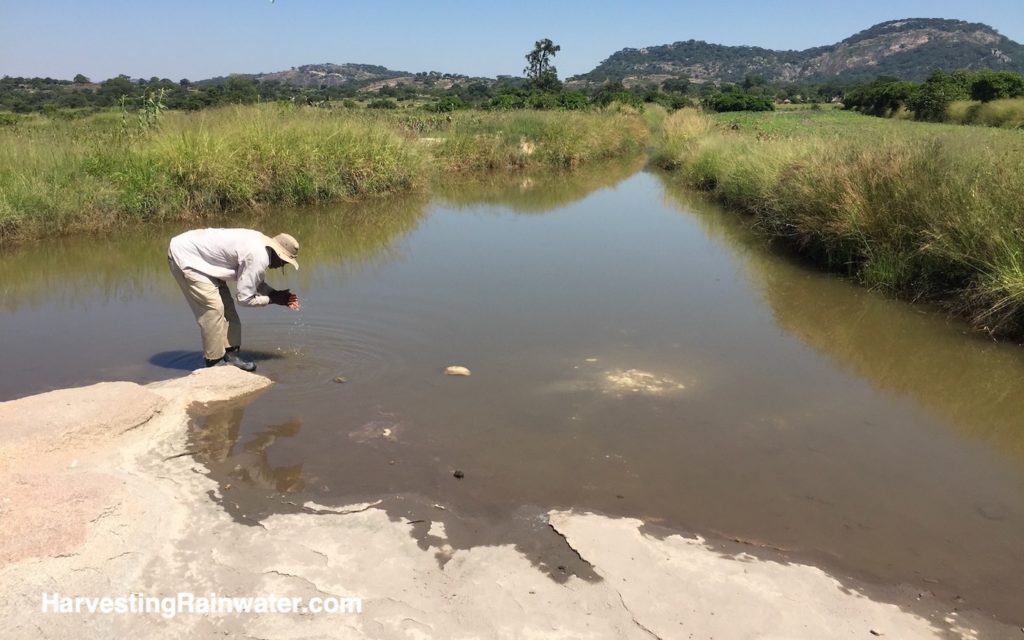
Photo: Brad Lancaster
The berm ‘n basins were then planted with soil-building fruit trees and perennial grasses for livestock fodder, erosion control, and roof thatching. Between the berm ‘n basins, he plants his annual crops on contour; and he has diversified his plantings to include many hardy heirloom crops such as finger millet, which is much more drought tolerant than other grains grown in the area.
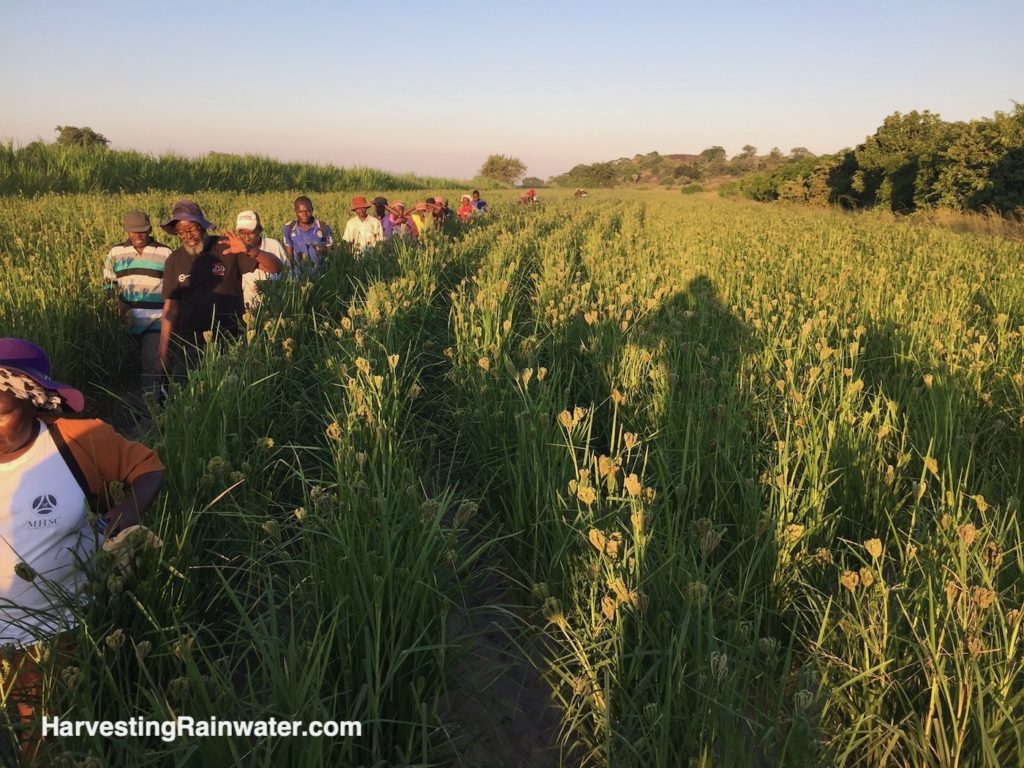
Photo: Brad Lancaster
Mr. Mawara catches fertilizer in the form of harvested nutrient-rich rain, runoff, and the organic matter it carries. And he grows fertilizer in the form of nitrogen-fixing legumes; manure from his livestock, fish, and wildlife; compost; and the life in his organically-farmed, moist soils. He feeds his soil not the crop, or as he says, “I feed the pregnant mother to feed the child.”
Watch a clip of an interview I did with Mr Mawara in 2016 below:
As a result of Bouwas Mawara’s water- and fertility-harvesting efforts, he is able to dry farm (farm solely with water from the rain) winter crops every dry season, including dry years when non-water harvesters get no crop. He also raises fish in water caught in his contour berm ‘n basins (he originally caught fish in a local river to stock his basins). And he even had excess water in the severe droughts of 1992 and 2008.
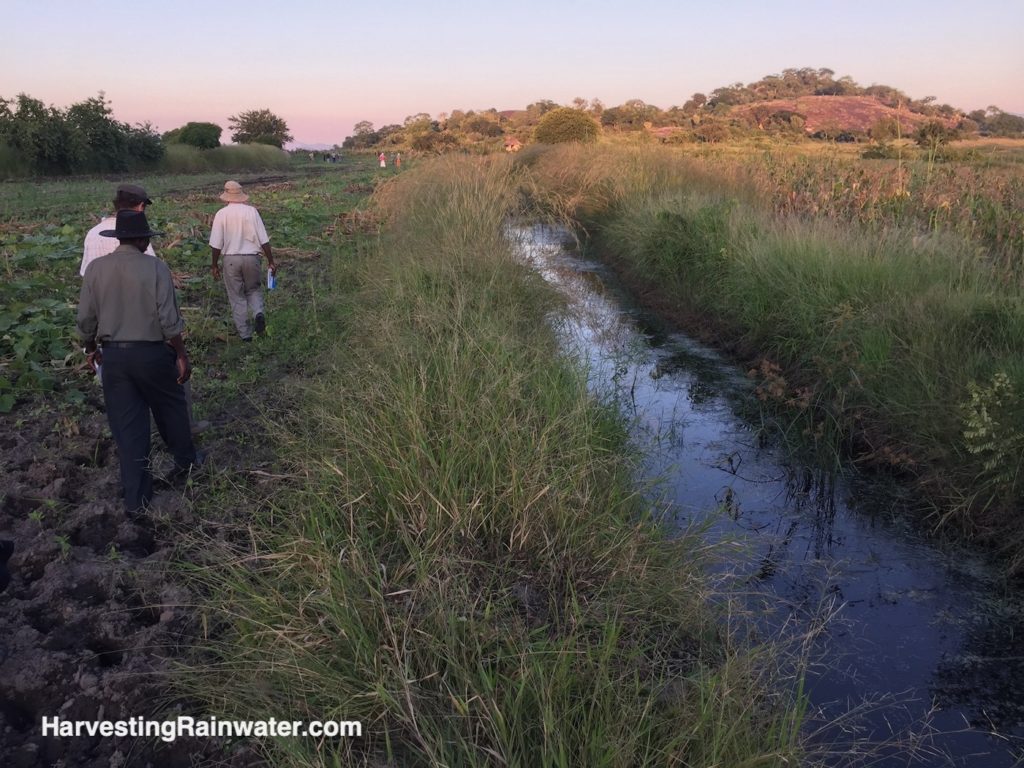
Photo: Brad Lancaster
To share such innovations and benefits among area farmers Mr. Mawara set up the Hupenyu Ivhu (Soil is Life) Farmer Innovators’ group in 1989, and in 2014 his work was recognized with the Phiri Award for Farm and Food Innovators.
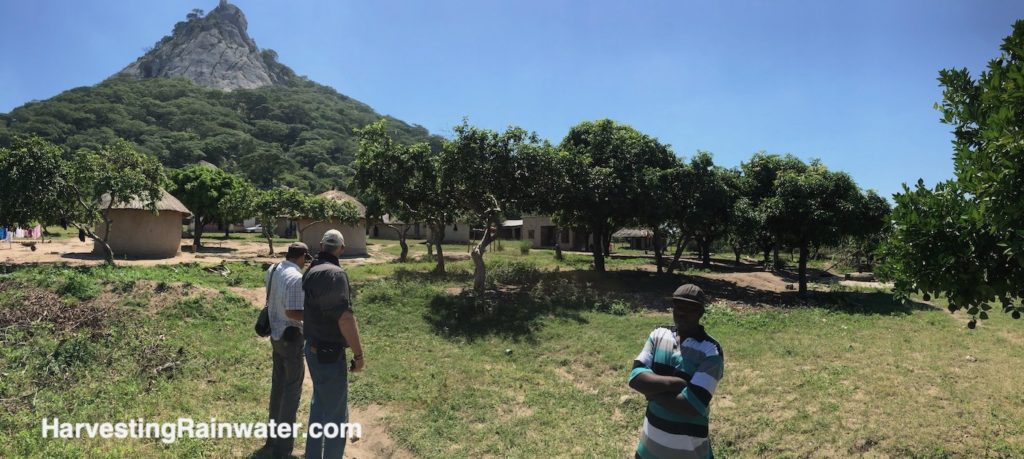
Photo: Brad Lancaster
It seems there is a great deal of healing and relearning evolving (and the need for still more) post-colonial rule. I was able to listen to an amazing discussion among elders, area farmers, and the local chief where the elders described how no one went hungry or thirsty before the area forests were cleared for colonial-era fields and farms. When forests were intact, there was no erosion, wild foods and wildlife were abundant, and springs and creeks flowed year-round. That abundance declined more and more, as more and more forest was cleared; and more stormwater, soil, and fertility flowed away. As a response, the Rhodesian government mandated the construction of diversion drains to reduce the erosion resulting from the clearing of the forest, which the government was also mandating. But when Bouwas and other farmers tried to preserve, and later replant, trees within their fields; they were fined and punished by the colonial rulers and their laws. No trees were allowed in the fields of annual crops. But some, like Bouwas, persisted. And when Zimbabwe gained its independence, Bouwas stepped up his reforesting efforts. Though as Mr. Mawara readily admits he could still do far more.
Hindering many are the residual scars of past punishment and social scorn that practitioners of diverse agroforestry and hunter gathering experienced. Unfortunately, the culture and erosive practice of clearing land to farm persists in many areas. Striving to see the potential of what already exists pre- “development”, and trying to learn from and collaborate with the high value of established, indigenous life is today the exception, rather than the norm. This is why I think examples such as the remaining forests, and the evolving farms and agroforestry of Mr. Mawara and others—such as one his mentors Mr. Phiri—are so important. They show us a different, thriving way that is more collaborative with the natural systems sustaining and regenerating life; and they can inspire us to go further. For as Mr. Phiri would often say, “I don’t want you to do what I do, I want you to do better than me.”
See the full-color editions of the books Rainwater Harvesting for Drylands and Beyond for more.
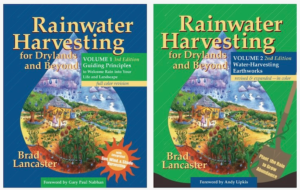
This trip, others by colleagues, and what was learned from these and other indigenous farmers, also helped inform the creation of the following resource:
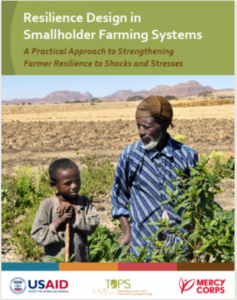
https://www.fsnnetwork.org/resilience-design-smallholder-farming-systems-approach
And please consider donating to the Muonde Trust that does wonderful work promoting and supporting indigenous water harvesting and more.
See the new, full-color, revised editions of Brad’s award-winning books
– available a deep discount, direct from Brad:

Volume 1

